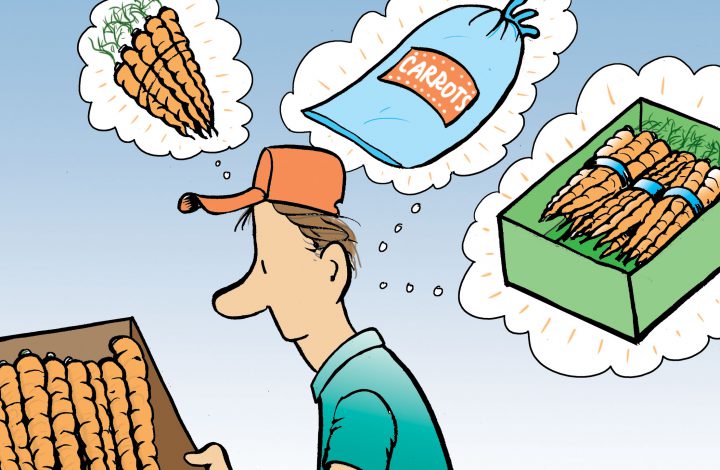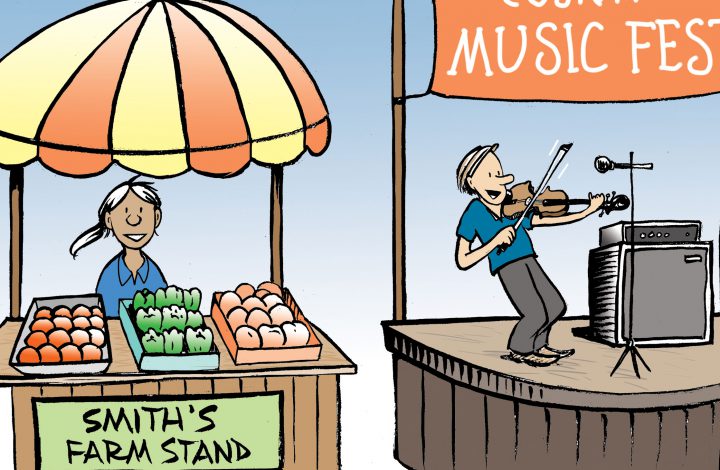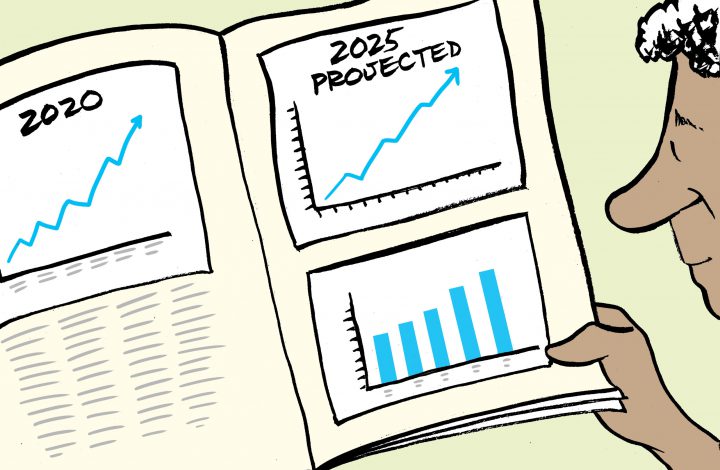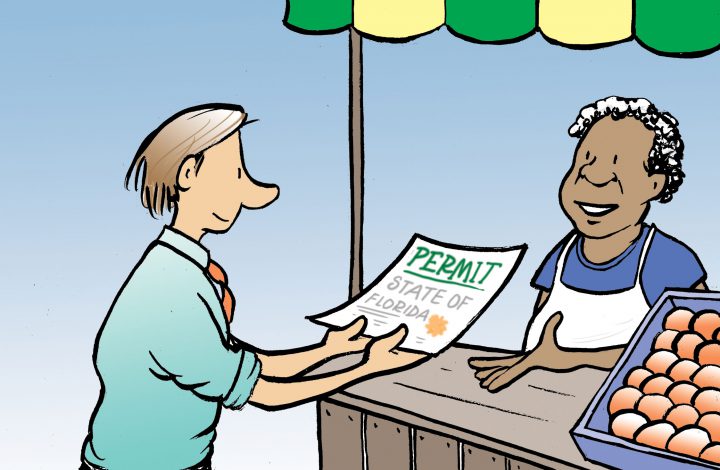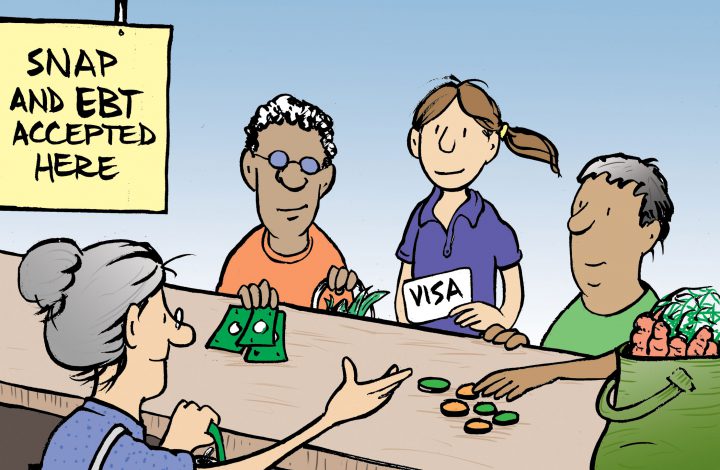The point of sale (POS) or point of purchase (POP) is the time and location where a sales transaction occurs. The goal for every business is to consistently increase the number of transactions and the total amount of each sale at the POS
Farmers’ markets usually operate during limited times and days, and this small window of sales opportunity makes it important for a farmers’ market business to have an efficient and organized process at the POS in order to maximize the number of transactions during the farmers’ market.
This guide will introduce a variety of common currencies used at the POS in farmers’ markets, suggest strategies to maximize the number of transactions at the POS, and provide suggestions on how to maintain quality customer service while expediting transactions during the farmers’ market
Cash Money
Cash money (bills and coins) is the oldest, simplest and most familiar type of currency used in markets, and it remains the most widely used currency in Florida farmers’ markets today. For cash transactions, vendors should have a large supply of one-dollar bills to make change.
An inexpensive ‘cash box’ can organize bills and coins at the POS, provide storage space for transaction supplies such as a pen and calculator, and include a locking device for security. Cash is beneficial because it is the most universal means of purchasing products, and it incurs no fee to make a transaction.
The downside to cash, however, is that calculating sales and counting money slows down the transaction process, allows for a greater margin of error, and theft and counterfeit bills can generate serious financial losses. Some recommendations for a cash-based POS include:
- Start each market day with a lot of one-dollar bills
- Routinely remove large bills from the cash box to a more secure location
- Aprons with pockets can provide a more secure means of storing cash than a box which can be stolen
- Keep a counterfeit marker in the cash box to verify large bills
- Price products in whole dollars to make it easier to provide change without additional coins
- Include tax in the purchase price for a more simple transaction
- If possible, have a designated POS person to oversee money and conduct all transactions
- Count the money received by a customer out loud in front of them after they hand it to you or keep the money paid by the customer out of the cashbox until after making a change in order to avoid disagreement or confusion over the amount of money that the customer gave to you
Credit & Debit Cards
There are a wide variety of internet-based POS services that make accepting credit and debit bank cards as easy as downloading an app to a cellphone, and a wide variety of portable table-top POS systems can integrate cash and bank card transactions with online inventory management and accounting systems (see below).
There are several benefits to accepting credit or debit cards. Bank cards are becoming as prevalent as cash in some communities, and accepting credit and debit allows customers to spend more than the cash they are carrying in their wallet. Bank cards enable customers to shop, order and/or pay online. Internet-based credit and debit systems maintain an electronic record of sales and provide the customer with a digital receipt for their purchase. Most credit and debit POS services direct-deposit money into a bank account within 24 hours.
There are a few downsides to bank cards, however. Most POS services deduct a processing fee before depositing funds into the business bank account, and processing fees based on a percentage of the sale amount can be significant in large purchases.
Credit card fraud is prevalent in the United States, and verifying a customer’s identity by looking at a photo I.D. can slow down the transaction process at the POS. A bank card transaction can be declined for a variety of reasons, and the experience of a declined card can embarrass the customer. In rare cases, a customer can reverse a charge on a credit card and contest the sale. Some recommendations for a credit & debit-based POS include:
- Invest in a credit card ‘chip reader’ that verifies customer identity
- Clearly posted signs informing customers that credit & debit cards are accepted
- Clearly posted requirements to accepts credit cards, such as showing a picture ID, so customers can be ready at the time of transaction
- Establish and clearly post a policy that credit card transactions over a specified amount will incur a processing fee
- Take advantage of POS service referral incentives that waive processing fees
- To avoid charge reversals, complete all business information in the POS system to ensure the customer can identify and recognize the transaction on their bank statement
- Avoid announcing a declined transaction by using a more subtle statement such as ‘it looks like your card is not working.’
Cryptocurrency
Cryptocurrency, or ‘crypto’, is a new form of digital currency that has become very trendy with younger consumers in recent years. Like credit and debit POS services, accepting cryptocurrency is as easy as downloading an app on a cell phone, and the digital currency is exchanged online. Cryptocurrency can be converted into US dollars, and most crypto exchange services will direct-deposit the dollars into a business bank account.
There are a few benefits to accepting crypto at a farmers’ market. The popularity and novelty of using cryptocurrency as an alternate form of money makes young consumers enthusiastic to engage in crypto-based transactions in novel locales such as a farmers’ market. Like credit and debit systems, accepting crypto allows customers to spend more than the cash they are carrying in their wallet. Customers can use crypto to order online and pay in advance. Most crypto systems maintain an electronic record of sales and provide the customer with a digital receipt for their purchase.
The greatest downside to crypto is that the currency is extremely volatile and risky; the exchange rate between a cryptocurrency and the US dollar fluctuates rapidly, even within a single day. Cryptocurrency is also not backed by any central government banks, so the currency can lose all of its value with no federal reinsurance program in place like the FDIC with American bank and credit union accounts. Another issue is theft by hackers, and the anonymous nature of most cryptocurrencies makes tracking down your money almost impossible.
This makes cryptocurrency a risky investment; a business can lose all value from a crypto transaction overnight or it may increase exponentially depending on the market. In addition, there are several different types of cryptocurrencies available with varying values, and the customer must translate the value of their crypto to the dollar value of the product. Like credit and debit, most crypto POS services deduct a processing fee for each transaction and some charge a fee to convert crypt to US dollars before depositing the money into a bank account. Some recommendations for integrating cryptocurrency into the POS include:
- Post signs informing customers of the types of crypto that are accepted
- Understand current legal issues and the market value of cryptocurrencies prior to engaging in transactions
- Limit crypt transactions to a few of the most popular and stable forms of cryptocurrencies
- Clearly post any limits to crypt transactions, such as maximum dollar amounts, to avoid costly losses
Integrated POS systems
In recent years the cash register and paper financial ledger have been replaced with small, lightweight, and portable online POS systems that are ideal for managing a mobile farmers’ market business. A growing number of farmers’ market businesses are adopting online POS systems because they integrate a calculator with cash, credit and debit transactions and provide a daily, weekly, and yearly tracking system for sales that are documented in an online inventory management and accounting system that can be directly linked to a business bank account. These integrated systems, therefore, allow easy access to important financial information.
POS systems can also provide additional services such as maintaining customer contact information, analyzing repeat customers and their average transaction amount, implementing various types of discounts and loyalty schemes for regular customers, providing online ordering services and customer invoicing, and producing inventory and financial reporting.
Balancing Efficiency and Customer Service at the POS
Farmers’ markets are social as well as economic spaces, and this challenges farmer market businesses with the task to balance the time needed to cultivate and maintain customer relationships with the goal to maximize sales during a limited time period. Disorganization and confusion at the POS can cost money as well as customers, and clear policies and procedures at the POS can provide more social time for customer engagement. Some recommendations for balancing POS efficiency with customer service:
- Assign a designated person to operate the POS system, handle money and make transactions
- Create a linear flow by designating separate physical spaces for customers to browse products, select products, and pay for products
- Provide opportunities for customers to order in advance, pay online in advance, and have the products ready to pick up at the farmers’ market
- Learn to identify serious customers who intend to purchase products from people who come to markets to interrogate vendors and take samples
- Provide flyers and brochures that offer answers to frequently asked questions
- For customers who linger and create a bottleneck at the POS, have business cards on hand to refer to the business website, social media, and contact information for after market communication
- Create meaningful experiences to engage with customers by offering customer appreciation agritourism opportunities on non-market days for social interactions (see the Agritourism guide on this website).
The point of sale is a critical time and location where a farmers’ market business engages with customers while striving to make the most sales transactions as possible in a limited time frame. The nature of the POS in a farmers’ market business depends on the unique needs of the business as well as the customer. While cash money systems are the simplest and most familiar means of making sales, calculating money can be time-consuming and confusing during busy periods. Digital POS systems such as credit, debit, and cryptocurrency are efficient yet sometimes risky and costly depending on the activity.
Through time and experience, a farmers’ market business can develop an efficient and organized process at the POS that will maximize the number of transactions during the farmers’ market while cultivating and maintaining positive customer relationships. For more information on topics related to managing the point of sale in a farmers’ market business, visit the Sales Venues, Financial Plans, Inventory, Lot-coding and Recall and Cottage Retail or Wholesale? guides on this website
